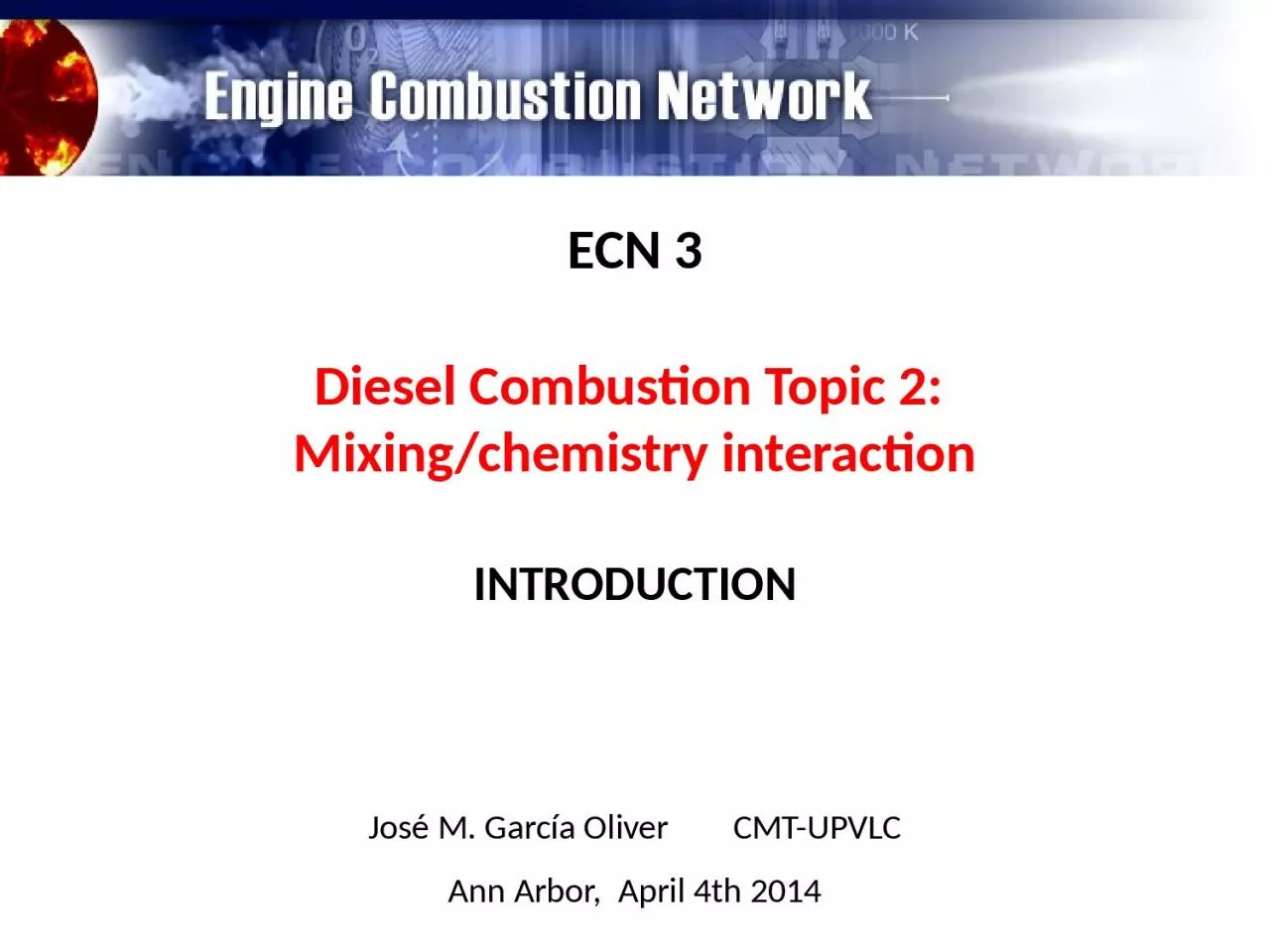

Mixingchemistry interaction INTRODUCTION José M García Oliver CMTUPVLC Ann Arbor April 4th 2014 TARGETS RELATED TO SPRAY COMBUSTION AFTER ECN2 Combustion modeling fidelity with different implementations wellmixed ID: 1022391
Download Presentation The PPT/PDF document "ECN 3 Diesel Combustion Topic 2:" is the property of its rightful owner. Permission is granted to download and print the materials on this web site for personal, non-commercial use only, and to display it on your personal computer provided you do not modify the materials and that you retain all copyright notices contained in the materials. By downloading content from our website, you accept the terms of this agreement.
1. ECN 3Diesel Combustion Topic 2: Mixing/chemistry interactionINTRODUCTIONJosé M. García Oliver CMT-UPVLCAnn Arbor, April 4th 2014
2. TARGETS RELATED TO SPRAY COMBUSTION AFTER ECN2 Combustion modeling fidelity with different implementations (well-mixed, flamelet, PDF, CMC, etc.) Ignition and lift-off length dependencies, with comparison to quantitative measured scalar profiles rather than simple thresholding RANS, engineering LES, and high-fidelity LES modeling Soot growth, oxidation, and particle structure INTRODUCTION TO TOPIC 2
3. CONTRIBUTORS AND DEVELOPED TASKSINTRODUCTION TO TOPIC 2EXPERIMENTSMODELLINGCONTRIBUTORSCMT, IFPEN, SNL, TUEANL, ETH, POLIMI, TUE, UNSW, UWISCMETHODOLOGY- TOOLSStandardization of experimental contributions with new techniquesComparison of modelling (TCI, soot) approachesANALYSIS -PHENOMENAIntegration of both modelling and experimental resultsDefinition of scientific questions to be answered
4. INTRODUCTION TO TOPIC 2
5. INTRODUCTION TO TOPIC 2MethodologyHow similar/different are experimental/modelling results among different groups regarding such indicators?AnalysisConfrontation for Spray A + Parametric variationsObjectivesDefinition and confrontation of quantitative parameters that can serve for a global description of the combustion processIgnition delayLift-off LengthOthers?? (e.g. reactive spray penetration, heat release rate…)
6. INTRODUCTION TO TOPIC 2MethodologyHow similar/different are experimental/modelling results among different groups for spatial and temporal flame evolution?AnalysisHow does flame structure evolve along the injection?ObjectivesAnalysis of flame spatial and temporal evolution in terms ofIgnition locationsDiffusion flame frontFlow evolution after start of combustion
7. INTRODUCTION TO TOPIC 2AnalysisWhich is the soot distribution within spray A?How is it modified with different parametric variables?How accurate do different modelling approaches predict the soot field?ObjectivesQuantification of flame soot distribution
8. INTRODUCTION TO TOPIC 2SUBTOPICPEOPLECOMBUSTION INDICATORSG D’ErricoO A KutiS-Y LeeM BardiFLAME STRUCTUREH BayaE Hawkes L-M MalbecM MeijerB SomersY WrightSOOT FIELDM BollaS SkeenD Haworth